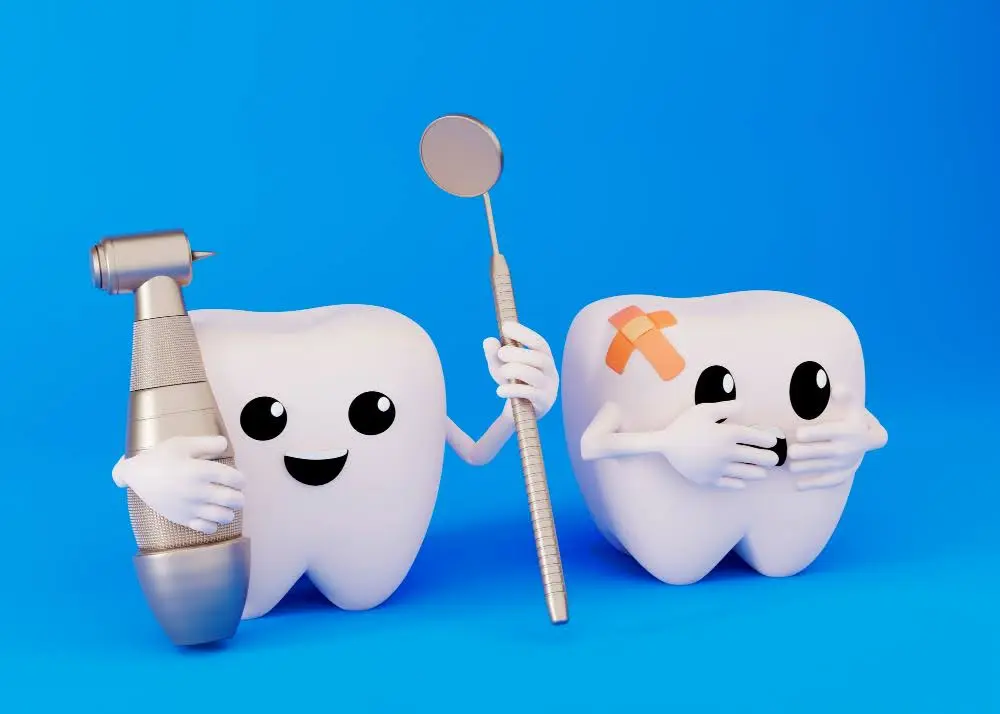
VISITING HOURS:
Week Days - 9 am to 8 pmSundays - Only Emergency Cases
8 Most Common Restorative Dental Procedures
Do you think your smile needs improvement? Or do you require medical attention because you are in pain? Dental clinics provide a variety of procedures. We'll go over the eight most common restorative dental procedures in this post, which can help you get your teeth back to their original appearance and functionality. The kind and extent of your tooth injury will determine the kind of restoration procedure you need.
What Are the Common Dental Restoration Procedures?
Common dental restoration procedures encompass a variety of treatments aimed at repairing or replacing damaged or missing teeth. These procedures play a crucial role in restoring oral health and enhancing the aesthetics of the smile. Some common restorative dental procedures include:
Dental Fillings
The most prevalent kind of dental restorations are dental fillings. A dental filling is used to fill up cavities in teeth caused by dental deterioration. The cavity will be filled after your dentist has cleaned the tooth. Dental fillings can be composed of composite resin or silver amalgam, among other materials. The more recent filling material, composite resins, are increasingly frequently chosen because of their white colour, which resembles that of healthy teeth. Additionally, metal fillings tend to expand and compress, which can occasionally harm teeth, but composite resins never do.
Dental Crowns
A dental crown is a kind of cap that covers a tooth completely. Crowns for teeth are used to shield:
Teeth with cavities that are too big for dental fillings
Teeth that are worn down or brittle
Teeth that have cracks in them
Teeth that are susceptible after a root canal.
They are also used to secure a bridge, which is used to replace lost teeth.A prosthodontist, a type of dentist speciality, or a dentist can place crowns. Your dentist might be able to create the crown you require right there in their clinic. Typically, a dentist will take an impression of your tooth and forward it to a laboratory so that the crown may be manufactured. In such a case, your dentist will cover your natural tooth with a temporary crown until the permanent crown can be fitted.
Dental Implants
Treating one or more missing teeth can be done using implants. The jaw is surgically opened to accommodate the implantation of an artificial tooth root, usually made of titanium. Fresh bone growth aids in solidifying the implant during the healing phase. This process, called osseointegration, requires four to six months to allow for optimal healing and guarantee the stability of the newly formed bone. Following this interim phase, an abutment is inserted to join the prosthetic tooth root to a crown or set of teeth. Because implants eliminate the common problems associated with traditional dentures, such as falling out artificial teeth, difficulty speaking, and difficulty eating, they have become a popular option for restoration. Furthermore, because implants preserve the jawbone, they may prevent tooth shifting and facial drooping.
Root Canal
There are instances when a cavity or crack penetrates your tooth to the pulp. Bacteria getting into your tooth's pulp can cause a severe infection. In these situations, root canal treatment is required. Your dentist will remove the diseased pulp during this procedure, along with the small blood vessels and nerves inside your tooth. Your teeth's interior surfaces will next be carefully cleaned and disinfected, and the canals will be filled with Gutta-percha, a rubbery dental substance. After that, a filling will be applied to seal the tooth and stop bacteria from getting inside. Most patients who have root canal therapy also require a crown to provide them with more strength and support.
Read to know: Advantages of Laser-Assisted Root Canal Treatment
Dental Bridge
Similar to a crown, a dental bridge contains multiple teeth linked to a single complete treatment. The most popular kind of dental bridge consists of a pontic tooth in the centre that only rests on top of the gum line, and two abutments that are affixed to neighbouring teeth. In cases where a patient is not a good candidate for dental implants, bridges are often a preferable option when a tooth has been lost. Similar to crowns, dental bridges are custom-made in a dental laboratory to precisely match the surrounding teeth for every patient.
Dental Bonding
This is an additional method for fixing broken or damaged teeth. It uses a resin, which is essentially a plastic that your dentist dyes to match the colour of your teeth naturally. Compared to certain other techniques, it is less intrusive, particularly for minor flaws. To properly set the resin, multiple layers are required, and each layer is "dried" using a light. After that, the area is cleansed and polished to let it blend in with the tooth. Although it's a simple process, it may require some time.
Dental Veneers
Teeth that are cracked, discoloured, crooked, or malformed can all be made to look better with veneers. Veneers are very thin porcelain or resin shells that are affixed directly to the front of teeth for aesthetic reasons. It is possible to shape and cut these shells to precisely fit over each tooth. If properly maintained and cared for, veneers can endure for many years. One of the main benefits of veneers is their natural appearance; unless you tell people, most people won't even know you've had dental work done.
Read to know: How to Prevent Staining Your Dental Veneers?
Inlays And Onlays
Sometimes a cavity is too big for a filling, yet too small for a crown. In this kind of situation, your dentist may suggest an onlay or inlay. Like jigsaw pieces, these bespoke restorations fit into the natural structure of your teeth. They are cemented in place permanently by your dentist. In contrast to an onlay, which covers at least one cusp, an inlay fills the space between your teeth's cusps.
Conclusion
In this article, we have discussed the common restorative dental procedures. Dental restorations can be performed for functional or aesthetic purposes. Your dental demands will determine which type you should choose. You can choose to have a more uniform smile after tooth restoration. Additionally, it can return each tooth to its original state, which facilitates speaking and chewing. Dentique, a leading dental clinic in Kochi, offers comprehensive dental solutions for all your needs. Contact us immediately if you require any of these dental restoration procedures.
OUR
TREATMENTS
TREATMENTS








